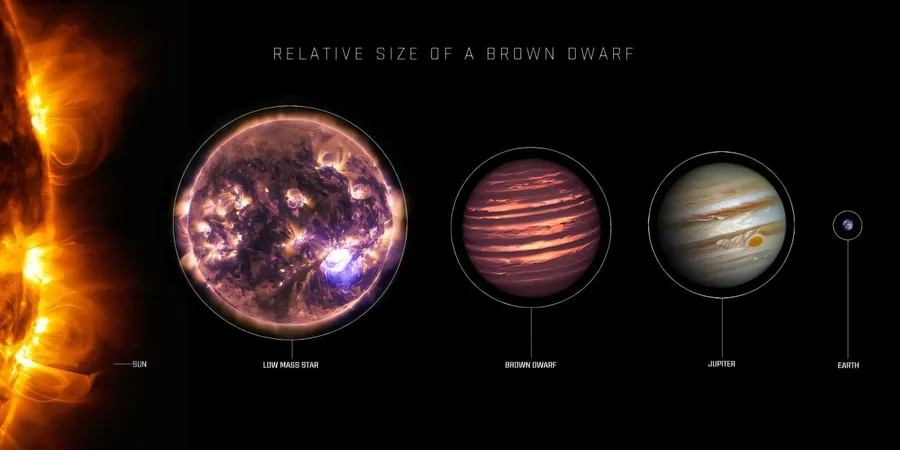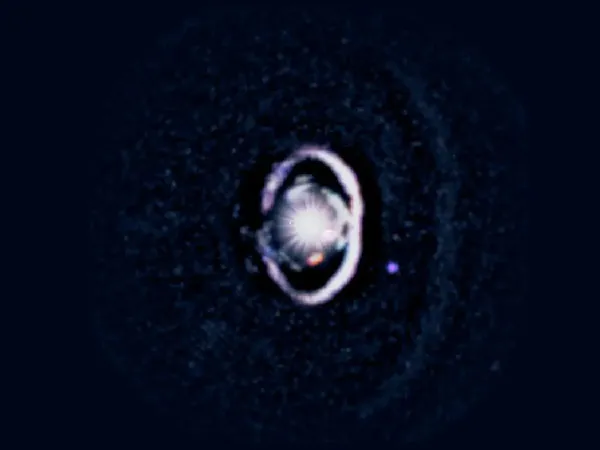
Unlocking the Secrets of Dark Matter: Could Dark Dwarfs Be the Key?
2025-07-12
Author: Charlotte
The Enigma of Dark Matter
Dark matter remains one of science's greatest puzzles, intriguing particle physicists and captivating cosmologists alike. We know it’s real because its gravitational influence keeps galaxies from disintegrating, yet its true nature eludes us.
A Mysterious Attraction
Dark matter seems to shy away from interacting with ordinary matter but may have intriguing interactions with itself. Researchers theorize that high-density environments could trigger dark matter particles to self-annihilate, providing a potential path for astrophysicists to finally confirm its existence.
Enter the Dark Dwarfs
New theoretical research sheds light on this possibility, proposing that brown dwarfs—sub-stellar objects that are larger than planets but too small to sustain hydrogen fusion—might serve as hosts for dark matter interactions. The study titled "Dark dwarfs: dark matter-powered sub-stellar objects awaiting discovery at the galactic center" was authored by Djuna Croon and her team.
Brown Dwarfs: The Dim Cousins of Stars
Brown dwarfs form in the same way as stars but fall short due to stalled gas accretion, resulting in their inability to shine brightly like their stellar cousins. Typically dimmer than white dwarfs, they cool and fade over time, making them notoriously difficult to detect.
A Breakthrough in Detection
Croon and her colleagues suggest that the self-annihilation of dark matter could render some brown dwarfs detectable. When dark matter particles collide and annihilate, they convert into energy and produce other particles, potentially illuminating these elusive objects.
The Role of Gravity
As co-author Jeremy Sakstein points out, dark matter is gravitationally attracted and can accumulate within stars, leading to energy release through self-annihilation. He believes that the higher density of dark matter closer to the galactic center could allow brown dwarfs to gather enough dark matter for this phenomenon to occur, forming new entities: dark dwarfs.
The Search for Evidence
Dark dwarfs differ from regular brown dwarfs in that they retain lithium-7, a highly stable isotope that normal brown dwarfs would deplete over time due to nuclear burning. Identifying these lithium signatures in suspected dark dwarfs provides a compelling case for their existence.
The Bigger Picture
Identifying dark dwarfs could transform our understanding of dark matter. If detected, it would suggest that dark matter is composed of weakly interacting massive particles (WIMPs) or other heavy particles that self-interact strongly. This could open the door to revolutionary insights into the fabric of our universe.
The Next Steps in Discovery
While the James Webb Space Telescope may assist in detecting these elusive objects, another strategy involves analyzing populations of celestial bodies statistically to see if their behavior aligns with dark dwarf characteristics.
A Glimpse into the Unknown
Finding dark dwarfs would not only shed light on the properties of dark matter but could also redefine our understanding of fundamental physics. They may offer substantial evidence that dark matter behaves similarly to WIMPs, leading scientists closer to unraveling one of the cosmos’s biggest mysteries.









 Brasil (PT)
Brasil (PT)
 Canada (EN)
Canada (EN)
 Chile (ES)
Chile (ES)
 Česko (CS)
Česko (CS)
 대한민국 (KO)
대한민국 (KO)
 España (ES)
España (ES)
 France (FR)
France (FR)
 Hong Kong (EN)
Hong Kong (EN)
 Italia (IT)
Italia (IT)
 日本 (JA)
日本 (JA)
 Magyarország (HU)
Magyarország (HU)
 Norge (NO)
Norge (NO)
 Polska (PL)
Polska (PL)
 Schweiz (DE)
Schweiz (DE)
 Singapore (EN)
Singapore (EN)
 Sverige (SV)
Sverige (SV)
 Suomi (FI)
Suomi (FI)
 Türkiye (TR)
Türkiye (TR)
 الإمارات العربية المتحدة (AR)
الإمارات العربية المتحدة (AR)